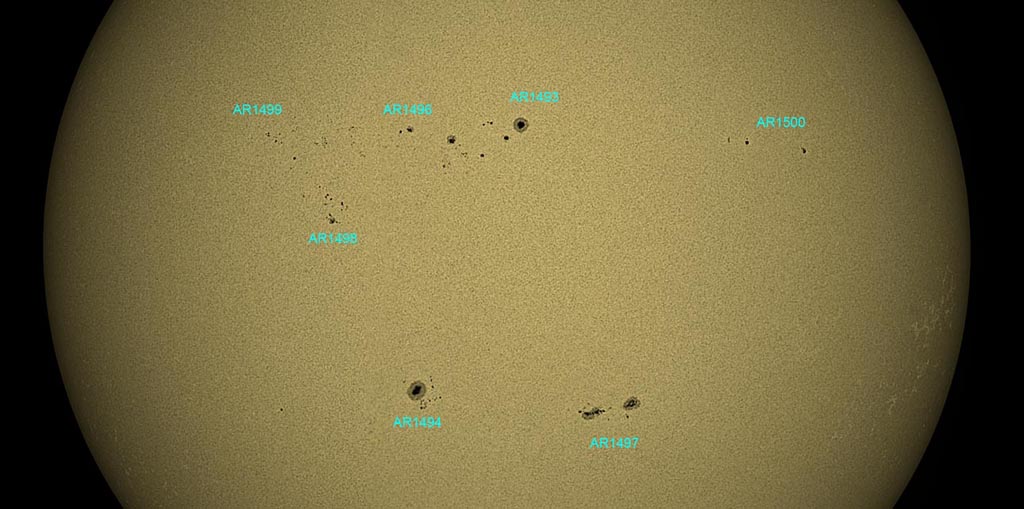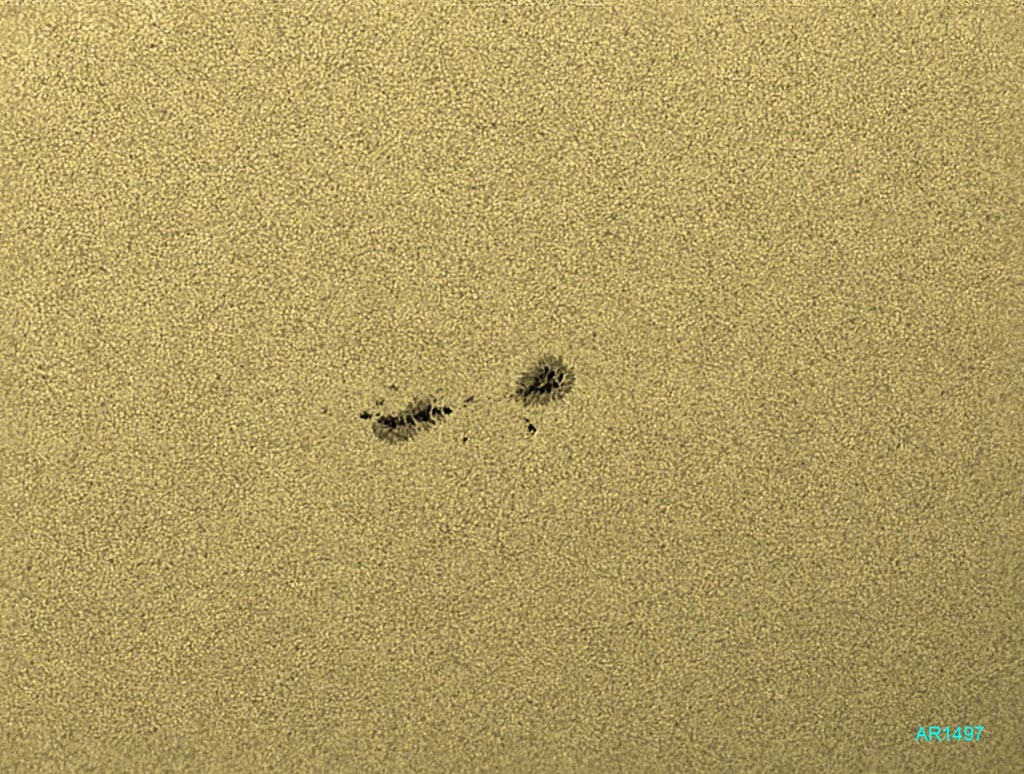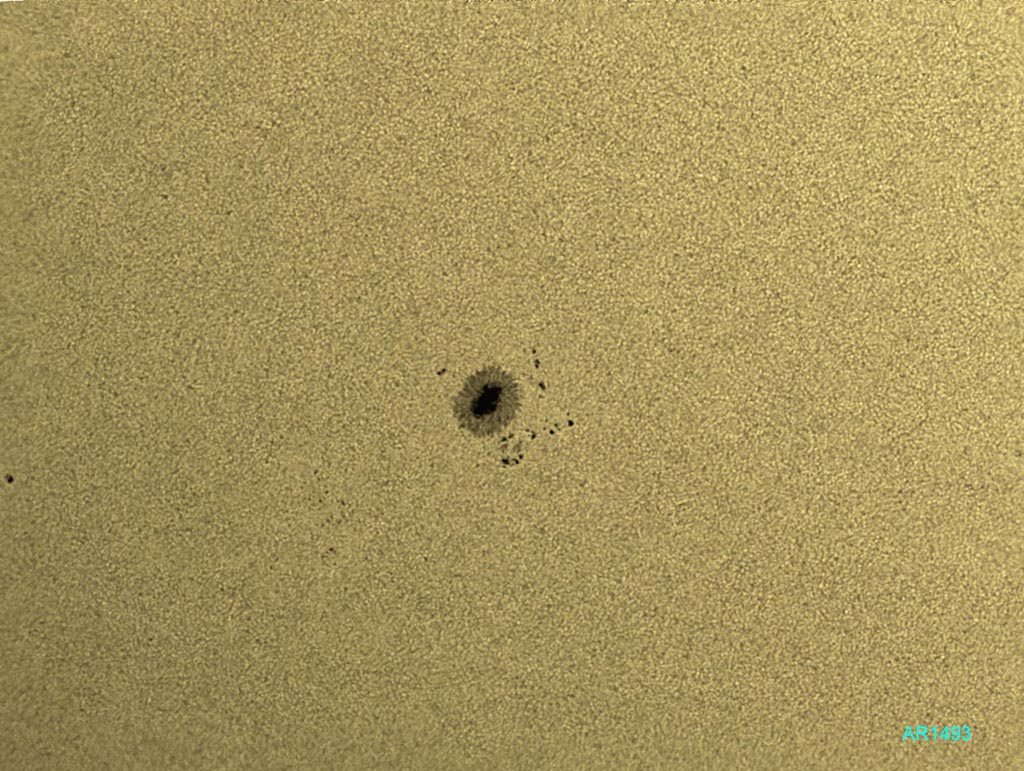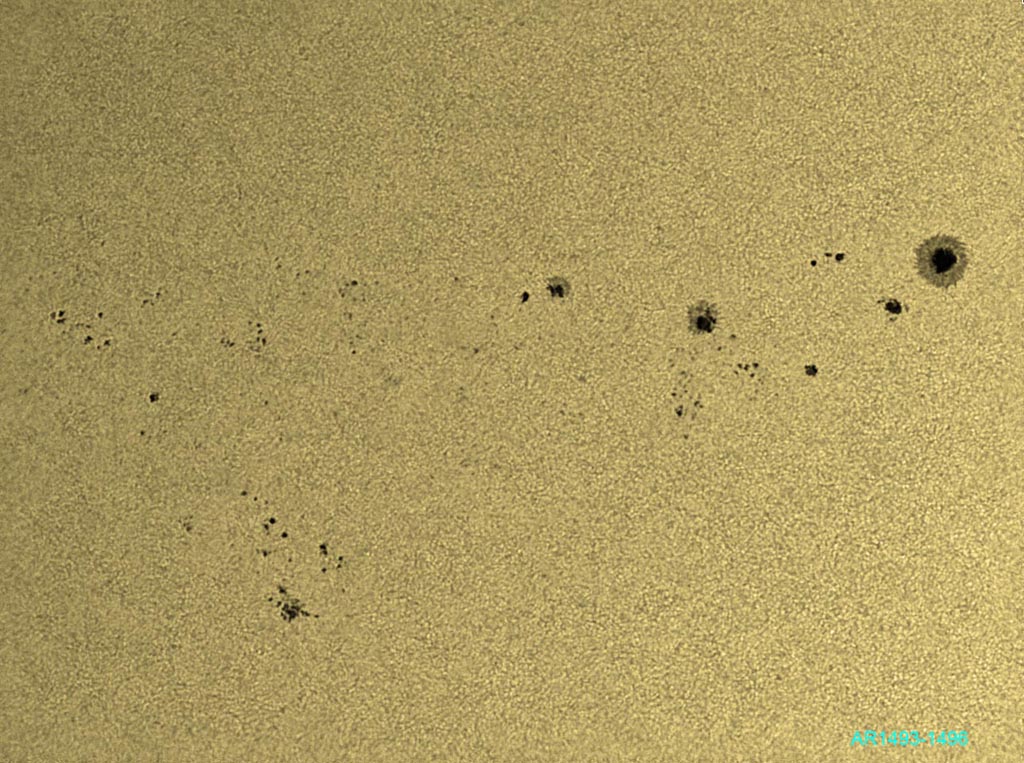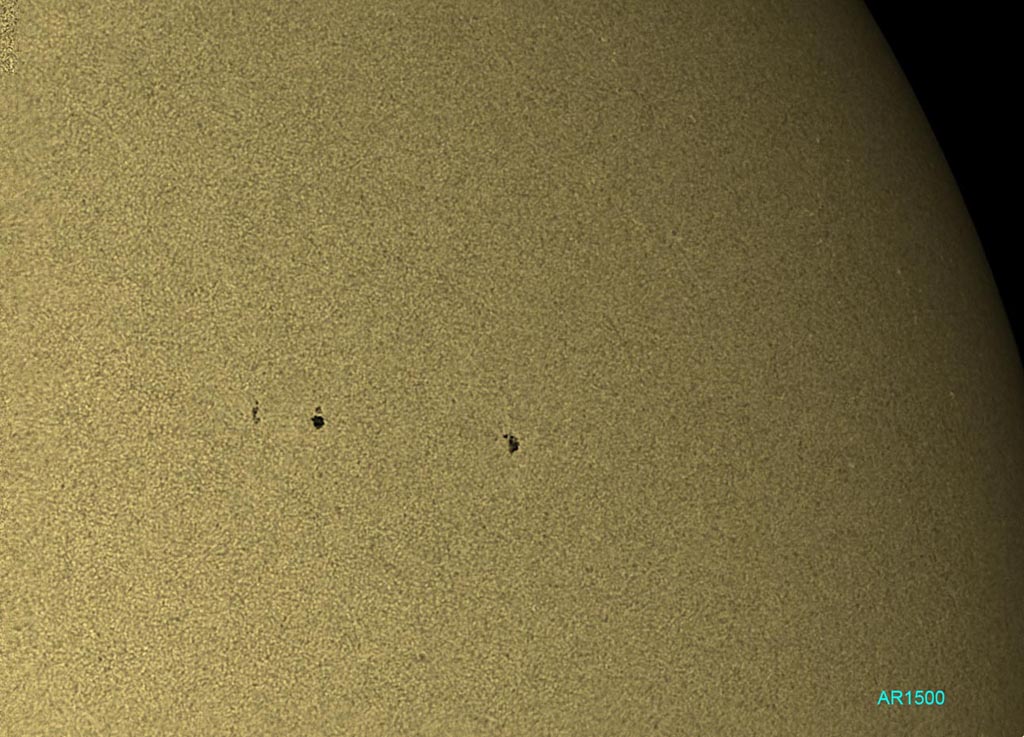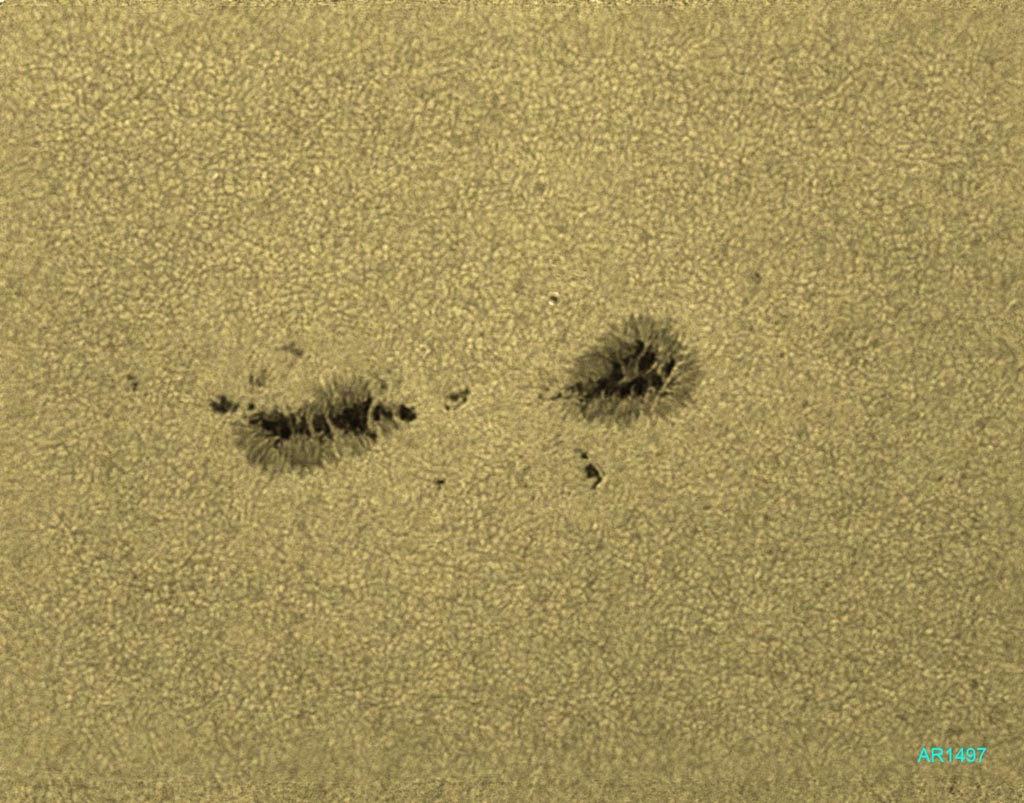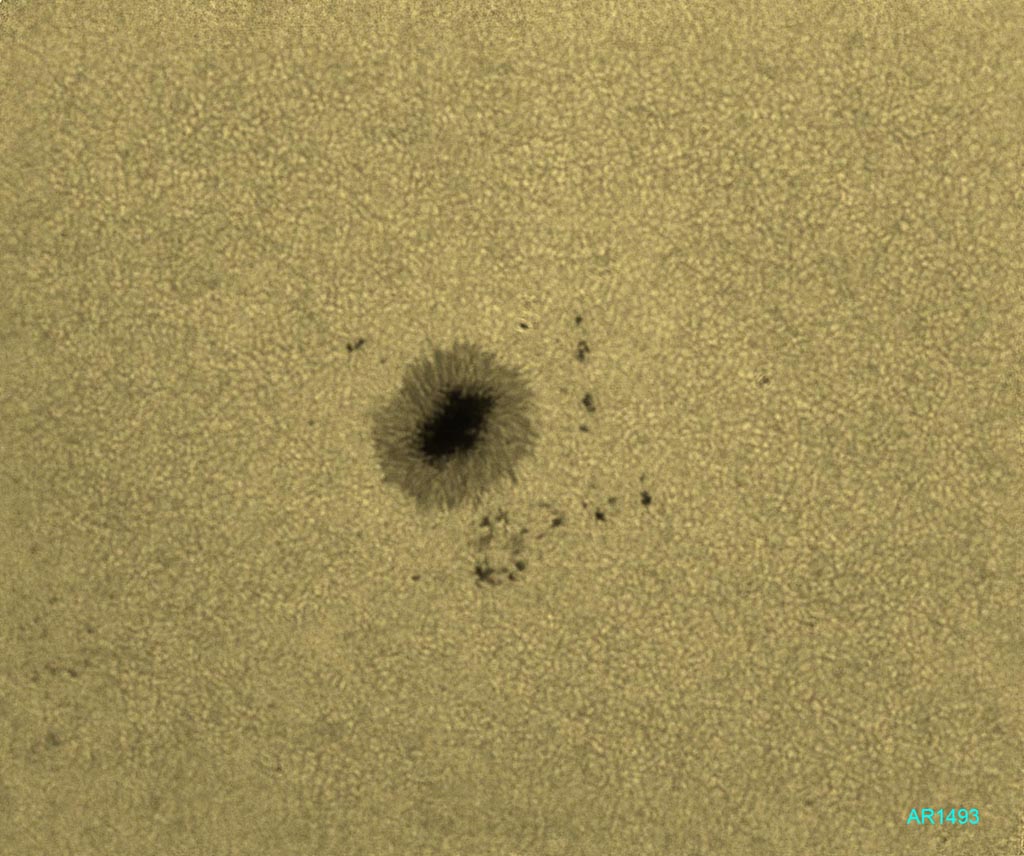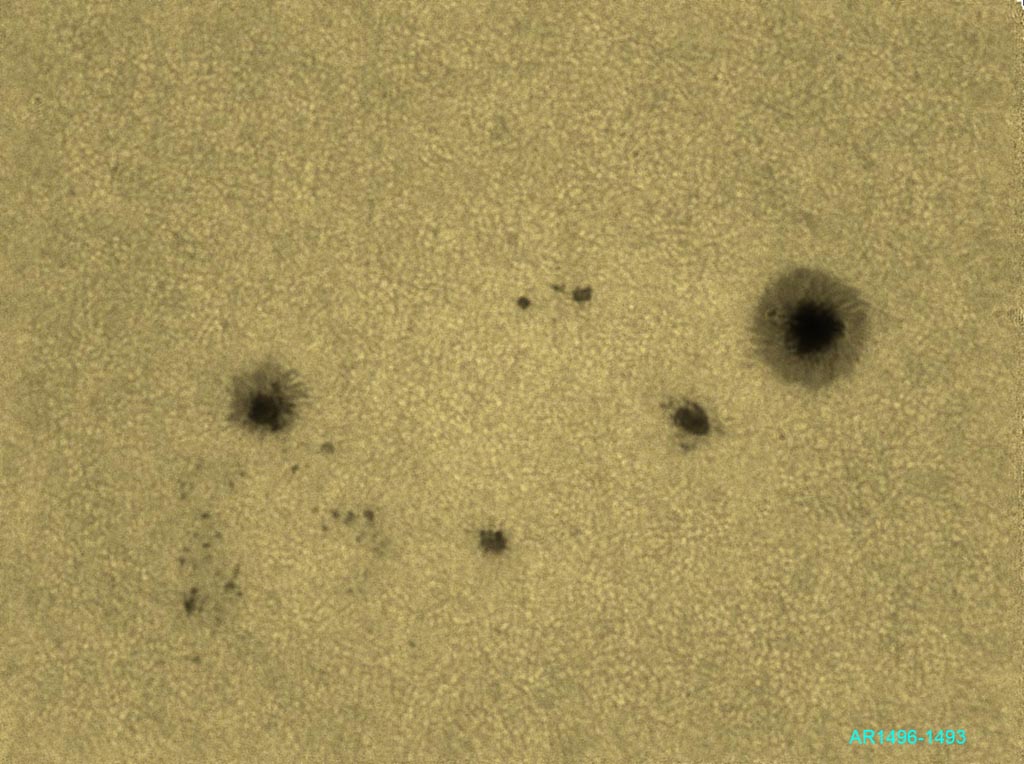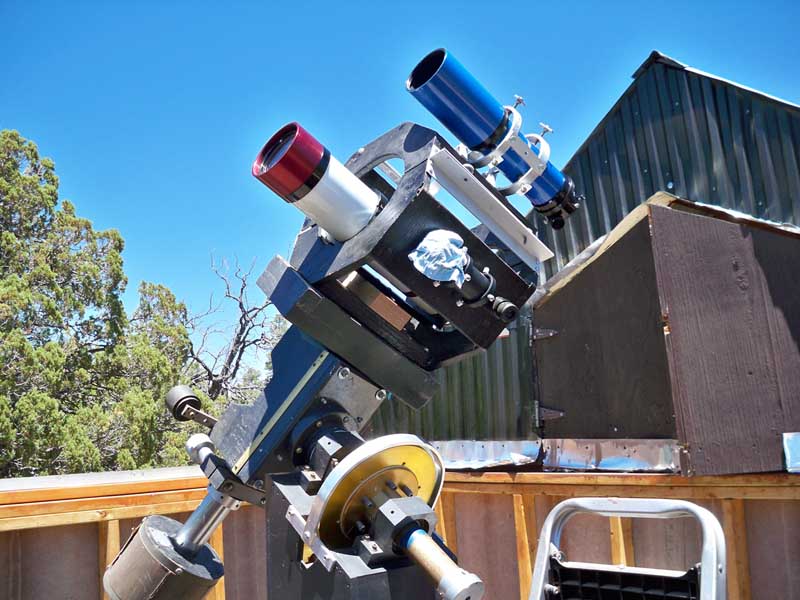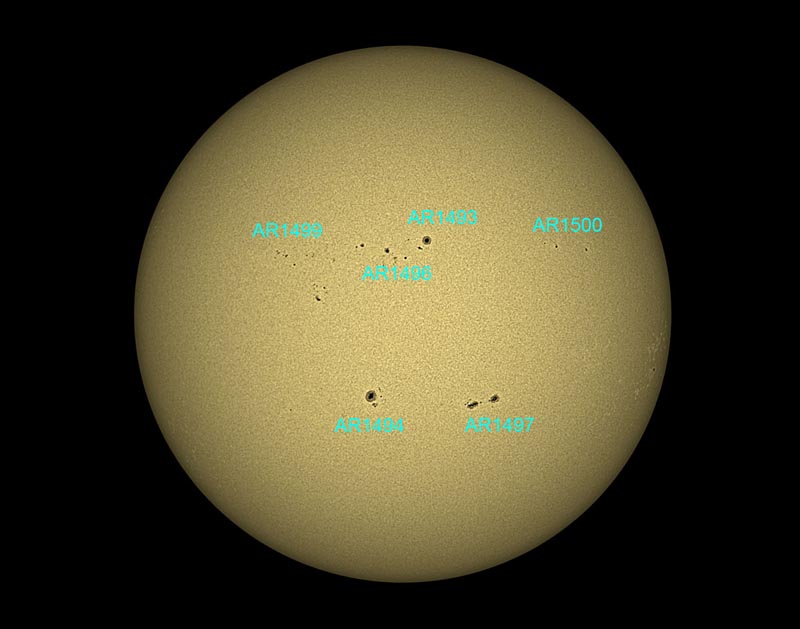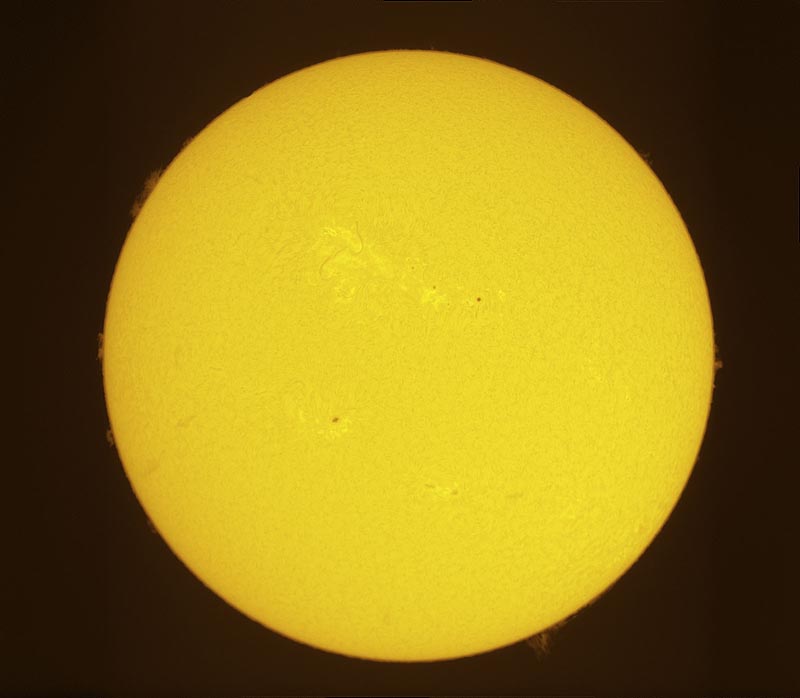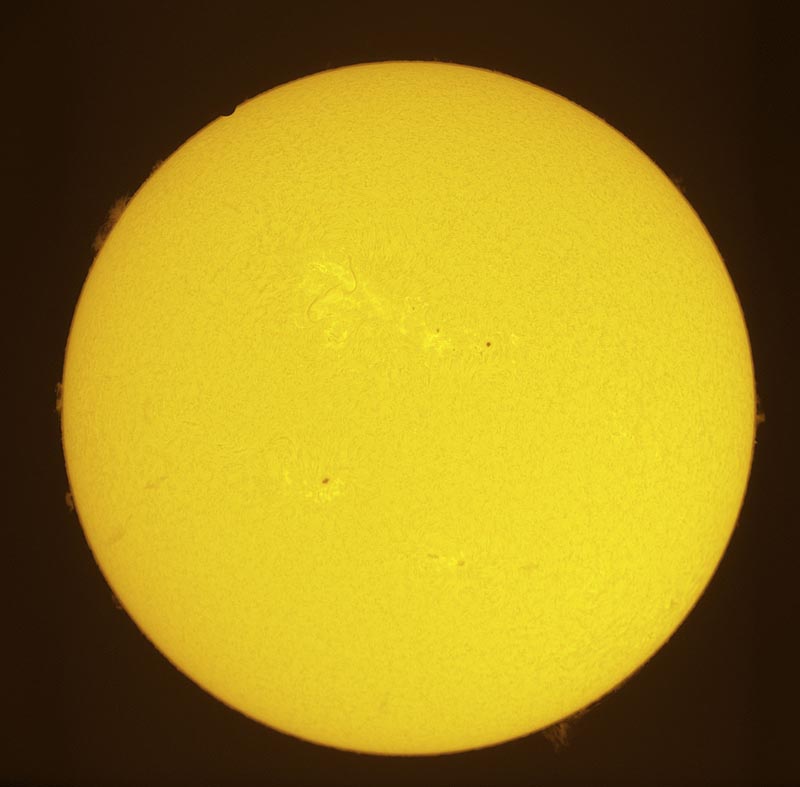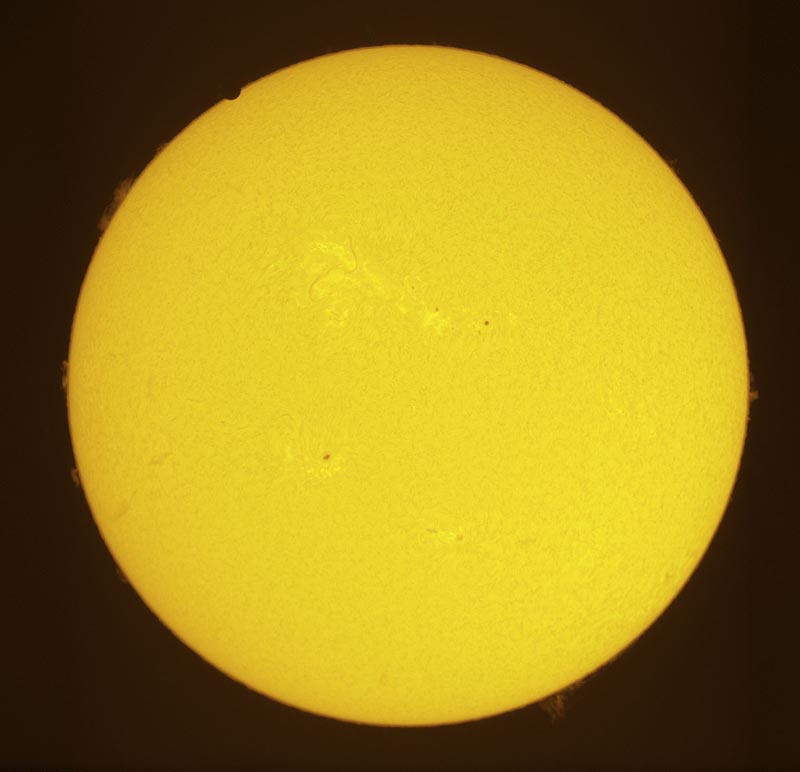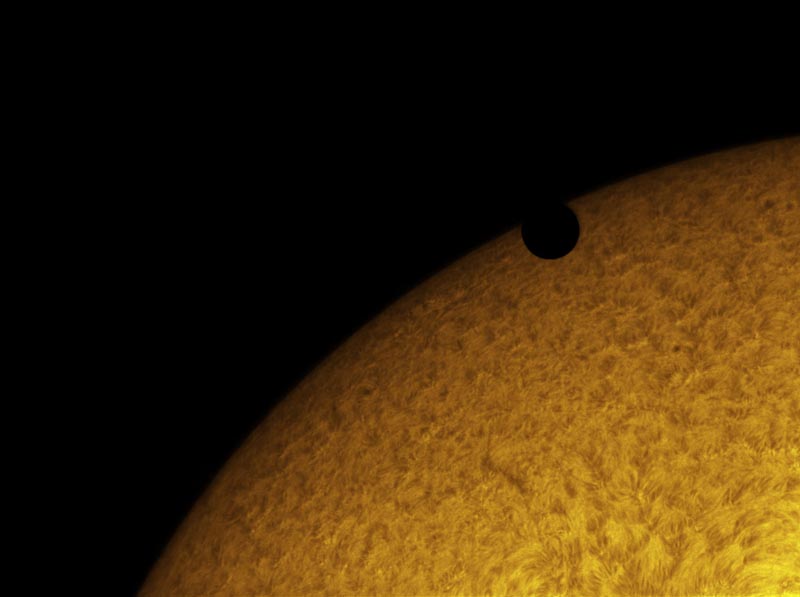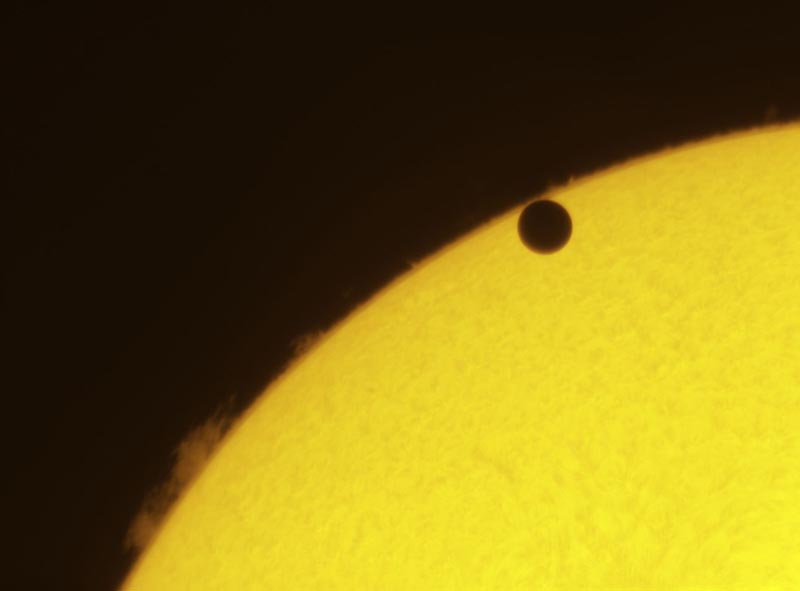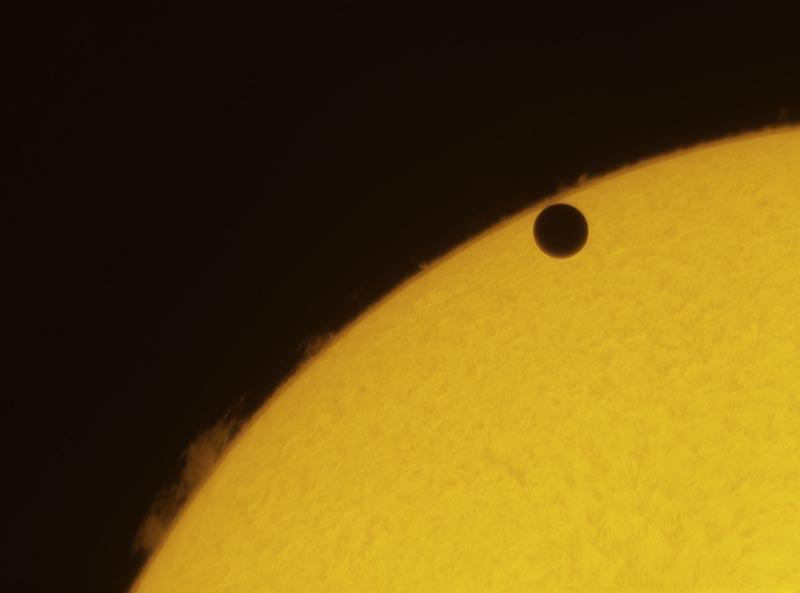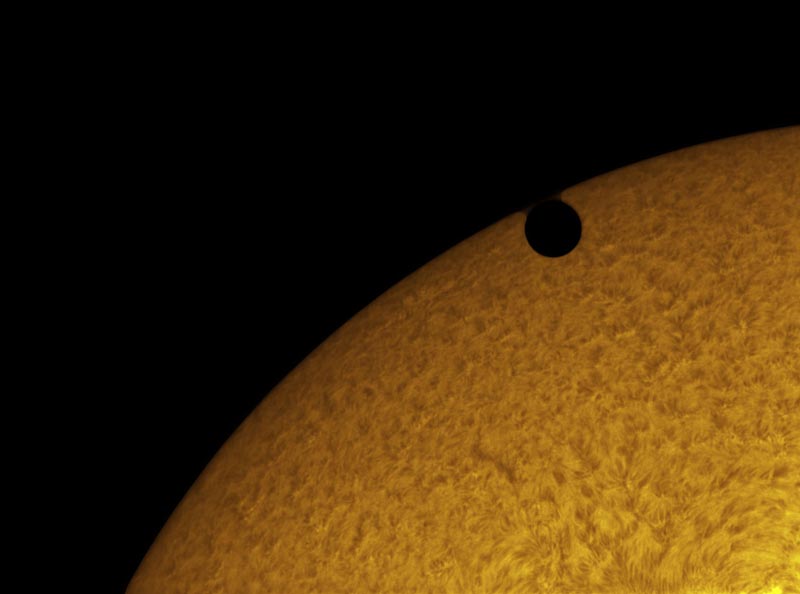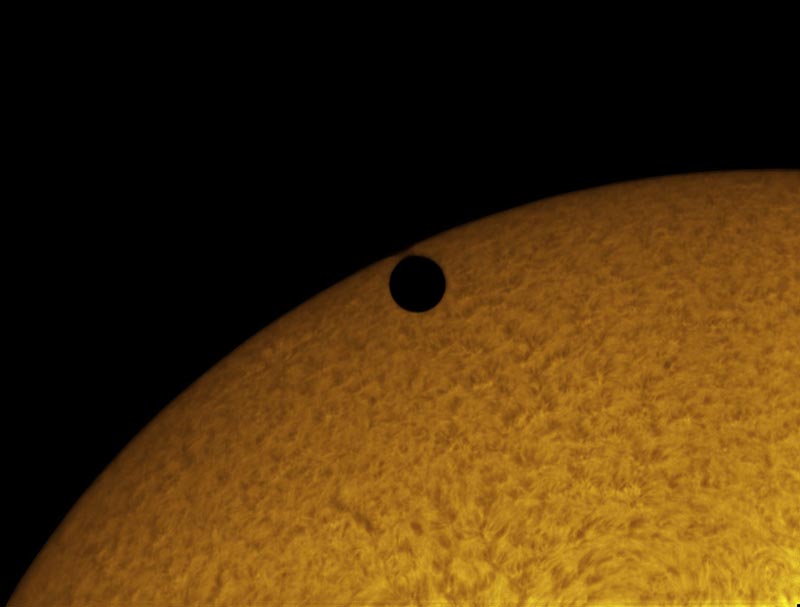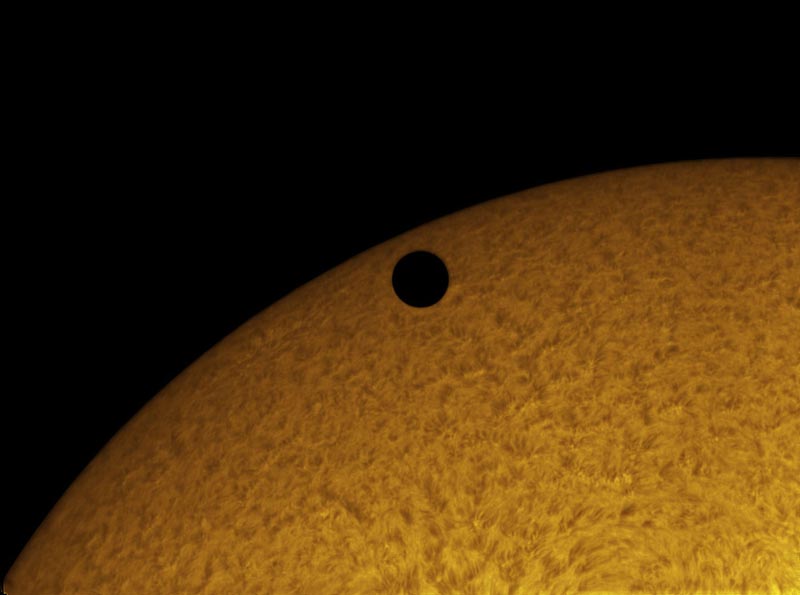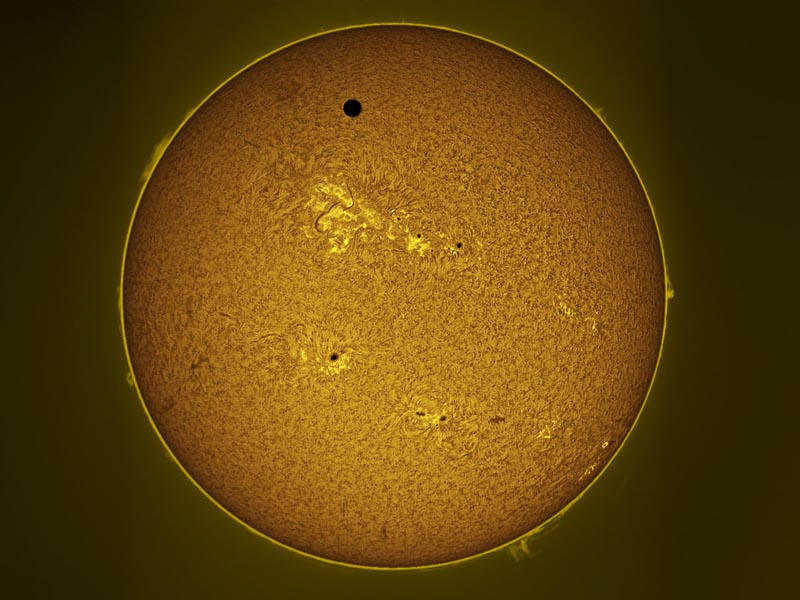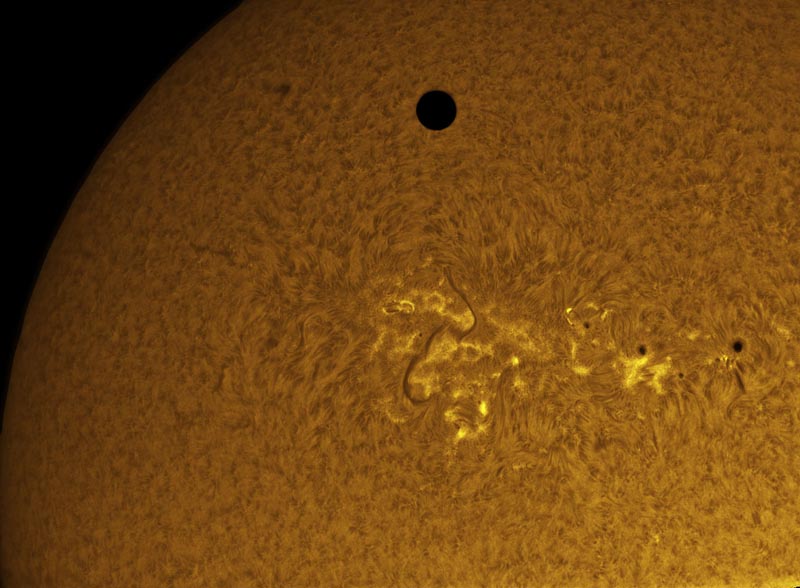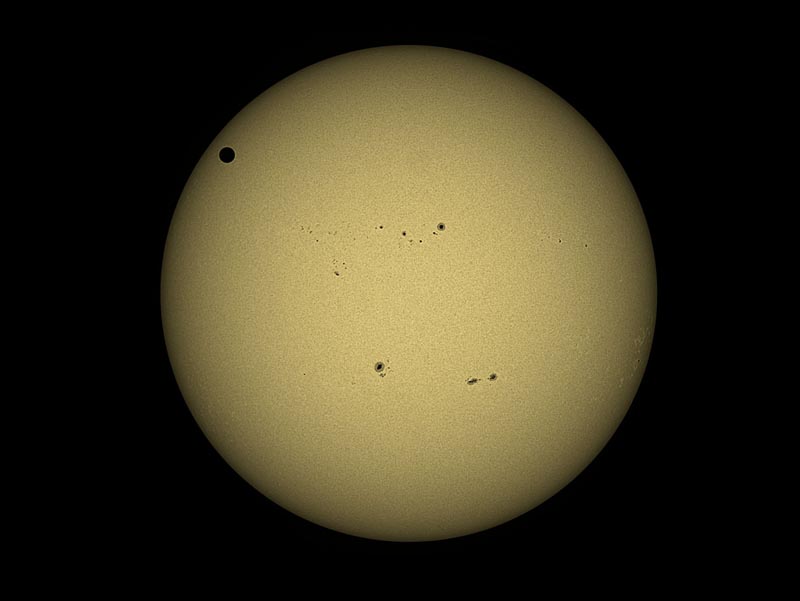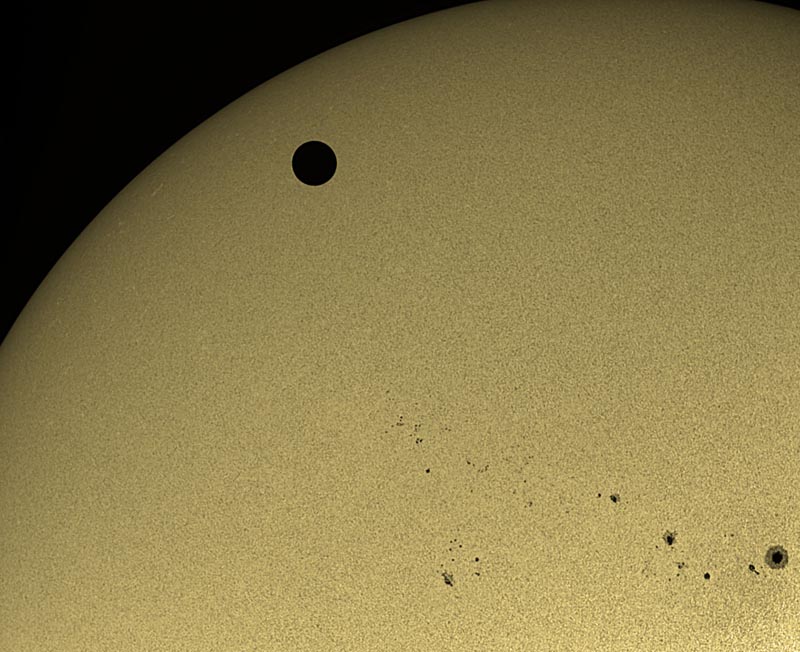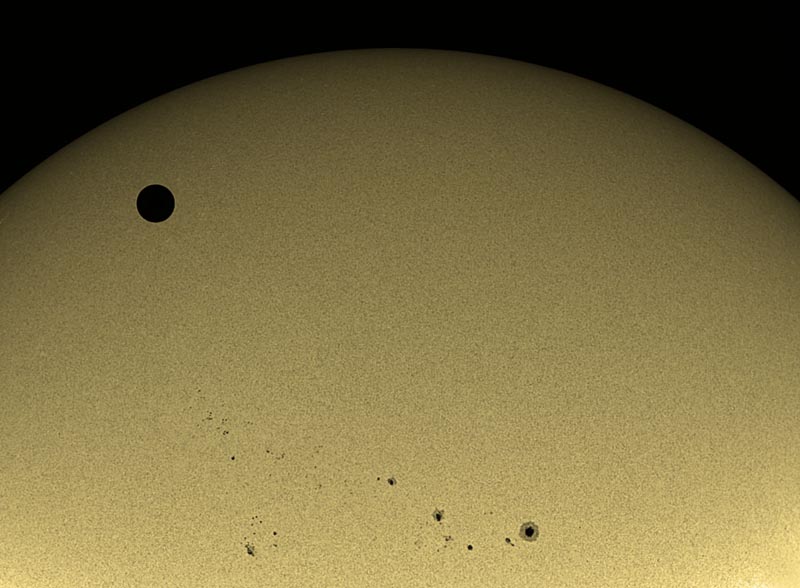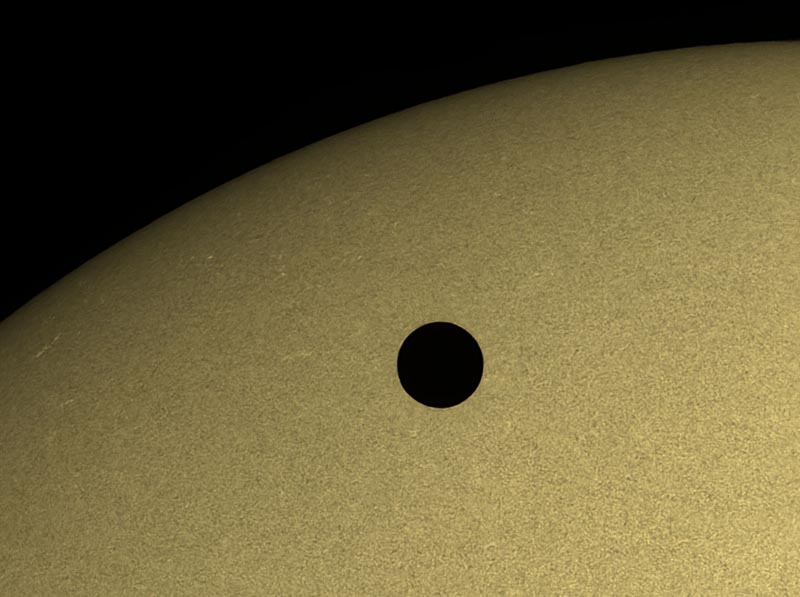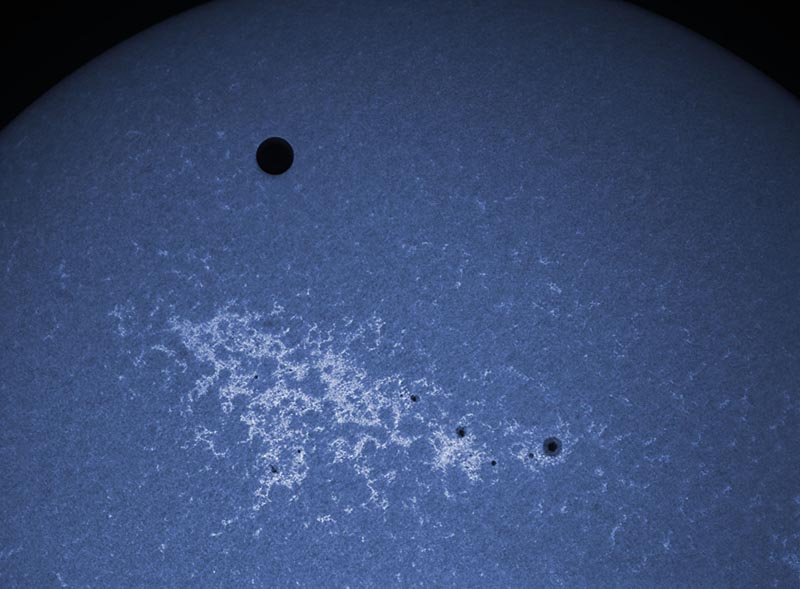Sun in HAlpha / CaK / White Light Transit of Venus 2012 With Lunt LS100THa / Stellarvue SV80s + Lunt CaK filter or Baader Wedge Uploaded 6/10/12 Final Report For Tuesday, June 5th, 2012
Images below are 800-1024 wide and clickable to larger sizes!
Only twice every several hundred years does the historical event of the planet Venus crossing the Sun occur. This was the second of a pair of events, the first in 2007 was unobservable from Arizona. In past events back in the last 1700's, sailing ships were sent by countries governments to all parts of the globe to observe this extremely rare event to find the scale of the solar system by measuring the exact times of first and last contacts. Today, we use radar to pin down the size of the solar system to far better accuracy, and observing such an occurrence is merely a visual and photographic past time.
On the morning of the 5th - transit day, I obtained some better images in the morning when seeing was best from our Payson observatory, then moved up to our second observatory in Happy Jack which had higher elevation and a much better western horizon to do the imaging of the transit itself. I was presented with high 40mph winds, poor seeing, and dive bombing wasps during the event, but succeeded in getting a few good shots in three wave bands - 530nm Green, 650nm Halpha, and 393nm Ultra Violet calcium. Here is our photo pictorial of that day.
Early Morning White Light images from Payson - Birch Mesa Observatory:
Here is a two part panorama of the active regions on the suns disk today. Many medium and small spot groups are apparent, making for a good variety of close up images possible. Ive labeled the active regions (AR) so you can see in the close ups which spot groups I am referring to. This was with the Six inch AR152 stopped to 80mm at prime focus, with a Baader wedge, Continuum filter and UV/IR blocker and all images in this write up are with the DMK51 CCD camera which has a native resolution of 1600 x 1200.
Next, we put in the 2.5x Televue Powermate for some closer views of the spot groups. Seeing varied from 2 - 3 /5 as the sun rose higher in the sky. This 2.5x set was with the AR152 Six inch stopped to 4 inches for maximum clarity when the seeing was worse near the horizon. Ive labeled the group number in the lower right corner on most images for clarity. A stunning pair to start:
Next a single medium spot cluster, showing the penumbral filaments in the area around the dark umbra. These are about 1.5 - 2 arc seconds in width normally. The granulation is becoming apparent with this aperture.
A beautiful clustering of tiny pores and small spots! There must be scores of pores here, those dark areas without a surrounding penumbra.
A small pair on the limb:
5x Powermate close ups. The seeing never did get much better than 3/5 but this was just enough to show the polygonal shape of the granulation. Full six inches of aperture is used here, proving that more aperture can result in better images even for the Sun:
Now look at those penumbral filaments! Some very tiny pores surround this enigmatic group as well.
Seeing was starting to degrade after only an hour. But I managed to get a close up of the big group of pores around the major spot complex. Oh how I wish the seeing would stay good for hours on end! But the Sun must rise, ground must heat up and we must say goodbye to the moments of best seeing for the day...
Observing the Transit later that day. Now we move to Happy Jack, about an hour north of Payson to our observatory built on a platform above the pine tree tops at 7000 feet elevation. Unfortunately, the seeing was 1-2 due to very high winds. But we did manage to get a few good shots of the event. Here is the Photo Pictorial.
Equipment Setup:
I removed the 8 inch astrograph from its home made cradle, and mounted the Lunt LS100 inside sticking out both ends. On top, the Stellarvue SV80 was mounted for white and Calcium K imaging. Both were set exactly in parallel to facilitate quick changes with the camera without recentering each time. The finder on the side has a rag stuffed in it to keep the sun from burning the reticle inside to a crisp...
The mount is completely home made, and was built to carry much larger instruments. It has one of the VERY LAST Byers star master drives ever made, and tracks 10x better than my Astrophysics mount back in Payson.
Images below are more or less in chronological sequence. Ive highlighted certain sets of images to demonstrate different aspects of the transit from start to a point when the sun went behind some nearby giant ponderosa pine trees. So lets get started!
Pre Transit Sun taken moments before the start at 3:06 pm. This is a white light view with the SV80 with key Active Regions labeled:
Next in Hydrogen Alpha light before the transit. Lunt LS100 with Antares .5x focal reducer to get the full disk.
Looking for the start of the Transit with the Lunt. Gamma (mid tone contrast) was set to a high number for low contrast and the ability to see the disk of the planet Venus coming in over the edges of the spicules and proms. This sequence takes just over 5 minutes. First shot, just barely before the transit. Venus will be coming in at the 10 o'clock position:
First contact as a tiny nibble to the upper left. Its tiny, look carefully just above the proms on the edge:
A few minutes later you can now see the notch clearly:
2 minutes later:
And the final high low contrast shot (which shows the limb and proms best)
Next I changed the gamma to a normal low value and the sun appears as I normally shoot it in Halpha. this is a few minutes later:
Next we will zoom in with the 2.5x Televue Powermate on the limb to watch the ingress more closely. A big surprise is coming...
Now with high gamma. You can now se the back edge of the disk is still over the spicules on the limb. This is technically before second contact, which traditionally is a white light event.
Second contact - when the back of the disk of Venus touches the suns limb.
Now in normal contrast the surprise - the "Ink Drop Effect", which results from the black disk leaving second contact in poor seeing. It is the bridge of dark connecting it still to the limb of the sun and is purely an earths atmospheric effect and is not real.
The last vestiges of the Ink Drop. Note that all frames in the entire imaging set are for 10 seconds recording time as to not blur the motion of the planet as it moves over the sun.
Now in high gamma, you can see the planet has significantly moved off the limb. The view now will not hold any more surprises as the planet skates across the sun.
Normal contrast same time.
Full disk view with Venus far from the limb:
2.5x close up over a huge active region:
White Light images with the SV80/Zeiss
Lets start with a full disk view with the planet inbound:
With the 2.5x Televue Powermate we can see the granulation starting to appear:
Now lets throw in some power! Here in somewhat better seeing is the event with the 5x Powermate on the 80mm:
And now for some real fun, we put in the CaK filters and The full disk was spectacular:
And now with the 2.5x, seeing permitting a few sharp images out of many sets I had to take because of the seeing in UV is always awful:
Final Thoughts...
Now that I have finally seen and imaged my first - and last Venus transit, Id like to mention a few things. First, the planets movement across the disk was far slower than when shooting a solar eclipse, allowing longer integration times for images. It seemed like it took forever to finally come onto the suns disk. Second, this is similar to what we must deal with when searching the galaxy for exoplanets. Using the transit method, we use either a ground based or preferably a space based telescope to monitor a stars brightness and look for drops in light caused by an exo planet crossing its disk. The drop is very small, and as you can see from these images, for an earth sized planet like Venus, the drop in light out put from the sun must be practically undetectable from a distance. Not to mention sunspots, faculae and other transient phenomenon to deal with as well!
Instruments: Lunt LS100THa Halpha or SV80S with Zeiss Apochromat Platform: Astrophysics 1200 morning / Homemade GEM transit Camera: DMK 51U (1600 x 1200) Location: Payson or Happy Jack Arizona Elevation: 5150 / 6800 ft. Sky: Seeing 2-3/10, Transparency 9/10 Outside Temperature: 45 - 65F Processing: Autostakkert 2, Photoshop CS2 Solar Home Page HOME SCHMIDT GALAXIES EMISSION NEBS REFLECTION NEBS COMETS GLOBULARS OPEN CLUST PLANETARIES LINKS
